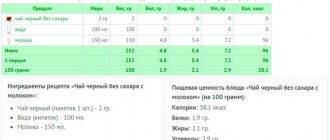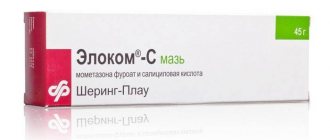Difference between lactose and lactase
Lactose is a milk disaccharide that contains glucose and galactose. In cow's milk its content is 4.9 grams per 100 grams of product, while in breast milk it is 6.8 grams per 100 grams.
To break down milk sugar, the human digestive system produces lactase, a deficiency of which causes lactase deficiency.
What leads to the development of lactase deficiency
Lactase deficiency in infants occurs due to disruption of the absorption of milk sugar by the intestinal walls. This condition is caused by a low concentration of lactase produced by the small intestine. Consequently, there is little enzyme and it simply cannot cope with the breakdown of lactose. It enters the large intestine, where bacteria begin to act on it, forming liquid and gases that provoke the appearance of symptoms of lactase deficiency.
Lactase deficiency in infants develops due to:
- Damage to the walls of the small intestine - it can occur against the background of infectious diseases, surgery and medication. All this provokes a decrease in enzyme production;
- Prematurity - In premature babies, the small intestine cannot produce the required amount of lactase in the first few months after birth. As the baby grows, the amount of the required enzyme normalizes.
- Congenital deficiency of the enzyme - sometimes genetics is to blame for the appearance of lactase deficiency. With a genetic disease, the small intestine produces little or no lactase.
It is one of the above reasons that leads to the development of lactase deficiency in an infant.
Symptoms of lactase deficiency
Lactase deficiency in infants is most often confused by parents with an allergic reaction to the protein contained in cow's milk. However, these two pathological conditions have different symptoms and causes of development.
When a child is allergic to cow's milk protein, a rash is often observed. With lactase deficiency, the baby is concerned about the following symptoms:
- Nausea and vomiting;
- Bloating;
- Colic;
- Diarrhea;
- Flatulence;
- Frequent regurgitation;
- Green stool with foam and mucus;
- Irritation of the skin during bowel movements;
- Constipation if the baby is bottle-fed.
If there are one or more symptoms of lactase deficiency, the baby should definitely be shown to a pediatrician.
What is lactase deficiency?
Lactase deficiency in infants occurs:
- Congenital - a genetic deficiency of the enzyme, in which it is produced either in minimal quantities or not at all. Most often, the first symptoms make themselves felt already during the first feeding. This type of lactase deficiency can be inherited.
- Secondary - it appears as a result of the negative impact on the small intestine of various diseases or factors, including allergies to cow's milk, Crohn's disease, cystic fibrosis, gluten intolerance, worms and gastrointestinal infections.
- Transient - in this case, lactase is produced in sufficient quantities, but it is not enough to completely break down the milk sugar entering the gastrointestinal tract. The baby develops symptoms of lactase deficiency, due to the fact that undigested lactose enters the large intestine and provokes the same symptoms as in its absence or deficiency.
"Note! Lactase deficiency also occurs with improper breastfeeding. If the mother gives two breasts at one feeding, the baby will begin to suck only the sweet front milk, without reaching the fatty rear milk. Eventually he will develop lactase deficiency.”
Decoding the results of fecal analysis for carbohydrates
The pediatrician evaluates the result of a stool analysis for carbohydrates, while simultaneously comparing the data with the presence of other symptoms, the general state of health, and the child’s well-being. Even if a stool test for carbohydrates shows a slight deviation, but the baby behaves well and no pathological symptoms are identified, treatment is not prescribed. A false positive result is usually assumed. Repeated stool testing is scheduled.
What is included in a stool test for carbohydrates in infants? The content of carbohydrates in the masses under study, their acidity, the number of fatty acid molecules, leukocytes, and the presence of protein are assessed.
If lactose is poorly tolerated by the body, traces of it will certainly be found in children's feces. A lot of carbohydrates, proteins, and leukocytes indicate the presence of inflammation. With an increased content of fatty acids, the intestines poorly absorb food. All this accompanies poor absorption of lactose in the body. Highly acidic feces (having a pH of up to 5.5) are often observed when acetic and lactic acid are included in the process of breaking down undigested lactose.
| Parameter | Reference values | Units | |
| Carbohydrate content in feces | Age | ||
| 0 - 2 weeks 2 weeks - 6 months 6-12 months | < 1 0 — 0,5 0 — 0,25 | % | |
The normal amount of carbohydrates in infant feces is up to 0.25% of the total volume. The detected elements can be either lactose, galactose, or glucose. If it is necessary to clarify the diagnosis, the doctor will prescribe additional examinations to prescribe treatment.
Diagnosis of the disease
According to statistics, only 1% of babies are born with lactase deficiency and 10% acquire it due to various reasons. To prevent the disease from causing serious complications, it should be diagnosed in time and the appropriate therapeutic technique should be selected.
When diagnosing the disease, pediatricians use the following methods:
- Coprogram - it can be used to determine the acidity of stool. Lactase deficiency in infants provokes acidification of stool.
- Hydrogen test - to carry it out, a certain amount of lactose is administered to the baby and the quantitative indicators of hydrogen in the exhaled air are measured. If there is a lot of it, the child has lactase intolerance, which causes fermentation in the large intestine and releases large amounts of hydrogen, which is removed during breathing.
- Endoscopic examination - during endoscopy, the doctor collects villi from the small intestine and determines the lactase content in them. This technique is not used in infancy because it is traumatic.
- Elimination test - the baby is transferred to a lactose-free diet, which he follows for 14 days. If the symptoms of lactase deficiency disappear, he is given an appropriate diagnosis.
In any case, without diagnostics it is impossible to accurately diagnose and understand what caused the development of the disease. Therefore, if symptoms of lactose intolerance appear, parents need to show their baby to a doctor and undergo an examination.
When the disease subsides
If a baby has hereditary lactose intolerance, the child will be prescribed a lactose-free diet for the rest of his life, following which he will reduce the symptoms of the disease.
Acquired intolerance, thanks to special treatment, recedes by the age of one year, but in rare cases, symptoms disappear only by 3 years. To diagnose recovery, a repeat analysis is performed at the end of treatment.
To prevent lactase deficiency from developing in a severe form, leading to retarded growth and development of the child, it is necessary to notice the signs of the disease in the child in time, carry out a diagnosis and, when the doctor prescribes treatment, strictly adhere to it.
Treatment of lactase deficiency
If the doctor has diagnosed a baby with lactase deficiency, then the main treatment will be to exclude foods that contain milk sugar from the diet. The mother will need to completely eliminate dairy products from her diet, and if the baby has a congenital pathology, she will have to give up breastfeeding and switch him to a lactose-free formula.
Proper nutrition
Considering the fact that genetic lactase deficiency is diagnosed in 1% of children, that is, the congenital absence of an enzyme capable of breaking down milk sugar is very rare, the famous pediatrician Komarovsky advises not to give up breastfeeding and not to switch to adapted formulas.
The production of lactase in the baby will be restored by 4 months and lactase deficiency will pass, but for now:
- To prevent excess lactose from entering the intestines, when breastfeeding, you should organize feeding on only one breast. At the same time, you need to ensure that the baby sucks it completely, getting to the nutritious hind milk, and does not consume only the fore milk, which contains a lot of sugar. In addition, it would be a good idea for mommy to express a little foremilk before feeding.
- If the baby is diagnosed with transient or secondary lactase deficiency and the mother wants to continue breastfeeding, the pediatrician can prescribe medications containing lactase, which the body has not yet learned to produce in sufficient quantities. Most often it is Lactazar or Lactase baby. They come in capsules and are added to expressed milk before each feeding. After the baby drinks fermented milk, it must be supplemented from the breast.
- You need to make sure that the little one does not overeat. Formula-fed babies should purchase a pacifier with a small hole, which will prevent milk from being quickly sucked out, thus avoiding excessive consumption of formula.
If you follow the above tips or take a tableted enzyme, the baby’s condition begins to improve within a few days.
Consumption of lactose-free mixtures
If the baby is on mixed or artificial feeding, then pediatricians advise parents to switch it to a lactose-free formula.
If lactase deficiency in a baby is congenital, then such baby food should be used constantly. For babies with secondary or transient lactase deficiency, it will be enough to consume such baby food until they begin to independently produce the required amount of the enzyme. After the manifestations of lactase deficiency decrease, the child can be transferred to fermented milk formulas or alternate them with lactose-free ones. Everything will depend on the general condition of the little one. And when the pathological condition can be stopped completely, the baby can be switched to feeding with a regular formula.
A sudden transition to lactose-free formulas is unacceptable, as this will lead to allergies, constipation and a deterioration in general condition. Pediatricians recommend doing this in several stages. On the first day, give 30 milliliters of the mixture, on the second - 60, on the third and fourth, give two full feedings, and on the following days use only the lactose-free mixture.
"Important information! During the transition to a lactose-free formula, the mother must constantly monitor the general condition of the baby. If it doesn’t suit him, he needs to choose a different brand of baby food.”
What you can eat if you have lactase deficiency and what you can’t eat
It is best to start feeding a child with lactase deficiency with vegetable purees. Potatoes, zucchini, cauliflower, pumpkin and carrots are ideal. A nuance - you should first feed your baby “pure” purees from one vegetable, and only after the child’s body gives a positive reaction to the puree, you can try mixing vegetables in one puree.
If the diagnosis remains in a child when he is one year old, it is necessary to decide on a special diet for lactase deficiency, which products can be included in his “adult menu” and which cannot.
In any case, always carefully study the composition of any product you want to give to your child. It should not contain hydrolactose, whey or casein.
Fermented milk products improve digestion in general, and digestion in lactose-deficient organisms especially. Therefore, it is important that kefir, fermented baked milk, yogurt or snowball be present in the child’s menu.
We will also provide nutritional recommendations for children with lactase deficiency, which foods can be eaten and which cannot?
Dairy
You can eat foods with reduced amounts of lactose, as well as kefir, yogurt and cottage cheese.
You cannot eat all foods made with whole milk, formulas made with milk, products made from powdered milk, and cheeses.
Animal products
You can eat cattle and poultry meat and fish in their pure form.
You cannot eat factory-made products - sausages, pates, liver, etc.
Fats
You can eat lard and oil, but only vegetable oil.
You should not eat butter, spread and margarine, as well as any butter-based creams.
Fruits and vegetables
You can eat everything except legumes, as well as fruits to which the child is allergic.
You should not eat peas, lentils, beans and other legumes.
Sweets
You can eat any sweets that contain sugar.
You should not eat any sweets that contain milk: caramel, milk chocolate, candies with milk filling, condensed milk. You need to carefully monitor the composition.











